New Challenger Power: Excessively Sublime
Filed under: Equinox, Autos
By John Gilbert
If you can’t tell by the “Sublime” paint job that is close to glow-in-the-dark green, then the little Superbee medallion on both flanks of the 2015 Dodge Challenger should put you on full alert: The Ponycar War just escalated.
The big news in the hot, fun, halo performance-car segment is that the new Mustang will be thoroughly restyled for 2015 with independent rear suspension and a high-tech EcoBoost engine option, plus a Shelby GT500 model with 500 horsepower, while Chevrolet is countering by blessing the new Camaro with a Corvette engine option with 505 horsepower as the $75,000 Z-28. What could Dodge do with its 2015 Challenger to avoid being left behind — literally and figuratively?
Plenty, as it turns out. Faced with higher stakes in the three-ponycar battle, which began back around 1970 when they were the stalwart performers in the Trans-Am road-racing series, the rejuvenated Chrysler group dedicated Dodge as its high-performance weapon, and Dodge engineers came through with bone-jarring power combined with clever technology to send the new Challenger off to battle well-armed. Speaking of the small group called “standard specialty segment,” and which I call future-retro ponycars, many might think it consists only of expensive toys, with rear-wheel drive that negates a lot of winter-driving use.
But consider that the segment sold 430,000 units last year, which is 10 percent more than in 2009, and it is projected to grow 42 percent in the next five years. The Challenger was reintroduced five years ago, and while its sales doubled from 2009-2013, it set a sales record last year, when it should have been fading as a fifth year vehicle. The new car should render all current records obsolete.
To the uninitiated, the new Challenger won’t look all that different from the current Challenger. But to the discerning eye, the revised grille and other subtle touches are remindful of the 1971 Challenger, but even at the height of muscle cars, no ponycar — and no hot sedan, for that matter — has had what lurks under the hood of the new Challenger. For openers, the Challenger starts with the very competent 3.6-liter V6, and steps up to the 5.7-liter Hemi V8, which takes the V6‘s 305 horsepower up to 375, coupled with 410 foot-pounds of torque in a stick-shift R/T version.
Leaping above the R/T is the R/T Plus, with a 6.4-liter Scat Pack model, which has 485 horsepower and 475 foot-pounds of torque through a six-speed manual or eight-speed automatic. That’s the one with the Superbee festooned to the sides, that cartoon symbol of Dodge and Plymouth power from over 40 years ago. Ah, but that’s not all. Remember, the new Mustang’s Shelby version is rumored to be about 500 horsepower, and Motor Trend did a cover story on the Z-28 Camaro, claiming 505 horsepower and 481 foot-pounds of torque. Dodge’s SRT — for Street and Racing Technology — high-performance team had a loftier objective: 700 horsepower.
They made it, with some to spare. They came up with a 6.2-liter Hemi V8, reinforced every component, and chose not to use direct injection, because forced injection was determined to be better for this project. They fitted a twin-screw supercharger on top to blast an air-fuel mixture into the cylinders and ultimately achieveed an incredible 707 horsepower, with 650 foot-pounds of torque. That engine comes in the top-performing package, which will be called the Hellcat, and we can expect it to rip off 0-60 times of around 4 seconds. Read more
Audi Expands A3 to Full Line
Filed under: Equinox, Autos
By John Gilbert
As the continuing rise of electronic gadgetry and driving controls engulfs the automobile world, I had the occasion to interview a bright young fellow who had left a prominent auto company to go to work for am aftermarket company that makes the electronic gadgets that are aiding and abetting our ability to drive, steer, control, stop, and park our contemporary cars.
I asked him of all the cars he has dealt with in his new job, which one is the most sophisticated from the standpoint of electronic connectivity. He first said the Tesla, which is an all-electric marvel but far from being a mainstream car. Of all the mainstream, readily available cars?
“The Audi A3,” he said, promptly. That is impressive, because I had just driven the first 2015 A3 at Audi’s introduction of the line, and while it is an unobtrusive car, I had noted during the introductory session and test drive, its high-level technology also made it a very sophisticated performer. The car automatically becomes Audi’s entry-level vehicle, starting at $29,900, and if you can resist the option bin you still get an impressive vehicle.
The A3 comes as a 4-door sedan first off, but that is only the leadoff hitter for a lineup of various models that will be part of a full-line segment of Audi’s impressive dossier. The well-loved 2.0-liter 4-cylinder turbocharged engine returns, upgraded to handle the quattro models with Audi’s patented all-wheel-drive system, and it will be joined by a new 1.8-liter turbo that turns the front-wheel-drive A3 into a truly sporty performer with exceptional fuel economy.
On a trip to Germany a few years ago, I first saw the Audi A3, as a smooth, sleek, compact 3-door hatchback. There were some 5-door hatches too, and they seemed to be all over. Anytime you go to Europe, you have to be impressed how European car-owners pack themselves comfortably and easily into efficiently smaller cars, even while U.S. consumers and manufacturers seemed to insist that bigger was better. A year later, when Audi brought the A3 into the U.S. market, I was anxiously awaiting the car, slightly smaller than the stellar A4 sedan, to see both the 4-door and 2-door versions rewrite some of the rules for U.S. entry-level hatchbacks.
I was mostly looking forward to the 3-door, the 2-door hatch, which was about the same size as the Volkswagen Golf. But it showed up in the U.S. market only as the 5-door, the 4-door hatch. My assumption was that Volkswagen, which is Audi’s parent, didn’t want any small hatchback to compete with the Golf, but I’ve never stopped hoping for the 3-door in the U.S.
Times have changed, although the U.S. remains a peculiar market. We seem bound by tradition, and tradition says we don’t buy hatchbacks, so we don’t. In the Volkswagen line, the Jetta 4-door sedan outsells the world-dominant 3-door Golf substantially. Not sure why, but it might have been parent Volkswagen’s decision to not bring in the A3’s 3-door hatch to protect the Golf. Regardless, sales of the 5-door A3 were disappointing, but then, that also is a hatchback.
Audi is setting its sights on changing all that for 2015 when the new generation of the A3 lands in the U.S. Leading off is the 4-door sedan, which we first were shown at the media introduction in San Francisco. No longer a blunt little 5-door subcompact hatchback, the new A3 sedan will be followed by a convertible, with an array of powerplants that starts with the 1.8-liter turbocharged 4, the 2.0 turbo upgrade, with a hotter 2.0 version coming in a soon-to-appear S3, and then a 2.0 turbodiesel model. A 1.4-liter 4 combined with an electric motor system in a hybrid will show up early next year, only in the 5-door hatch. Read more
Honda’s New Subcompact an Even Better Fit
Filed under: Equinox, Autos
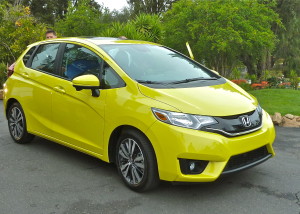
For 2015, Honda redesigned the subcompact Fit from top to bottom, with more room, power, gas mileage.
By John Gilbert
Other than the engine, transmission, suspension, steering, safety technology, platform, exterior body panels, interior room and design, and latest safety and connectivity technology, there isn’t really that much that’s new about the 2015 Honda Fit.
It’s still got the same old name.
Of course, even there Honda has a winner, because Fit was the perfect name when the popular subcompact was first introduced and revised for a second generation. Starting under $20,000, the versatility of the Fit handled whatever you were doing, whether climbing aboard to drive or ride, stashing groceries under the hatchback, or folding the rear seats flat for extra storage, everything in the car…fit!
It’s risky to start redesigning an iconic car like the Fit, which is just as impressive among subcompacts as the Civic is among compacts or the Accord is among midsize cars. But in the case of the third-generation Fit for 2015, Honda has worked its magic to take a car that functioned so well in every way and improve it in every way.
My reservations about the first Fit, which made its debut in 2006, and the second-generation car as well, was that Honda seemed content to reach 30 miles per gallon with the car and its 1500 cc. engine. Honda, Toyota, Nissan, Mazda, Subaru and Mitsubishi, in my opinion, seemed to create a Japanese manufacturer’s united front that 30 mpg was good enough, so they stuck with it. German manufacturers, and then the South Korean breakthrough by Hyundai and partner Kia, proved “40 is the new 30,” and the Japanese were suddenly scrambling to catch up. Mazda was first, with the Skyactiv technology on its 2.0 and 2.5-liter engines. Honda followed by impressively redoing the 2.4-liter 4-cylinder for the Accord.
It was, therefore, with great anticipation that I attended the automotive media introduction of the 2015 Fit, in San Diego. We were stationed at the trendy Andaz Hotel, and our choreographed destination was to drive through the mountains to the Mount Woodson Castle.
The most recent Honda Fit I’d had for a week’s test remained fresh for comparison: At 70 mph, the little single-overhead-camshaft engine was turning 3,000 RPMs through fifth gear of its 5-speed transmission, a high rev reading that resulted in 31 mpg. That was OK, but just OK for a subcompact. I figured a lot of revs were being wasted in fifth, doing the comparatively simple task of maintaining cruising speed.
Read more
Alfa Romeo Rides Exotic 4C Back Into U.S.
Filed under: Equinox, Autos
By John Gilbert
Every auto manufacturer wants to convince customers that its cars are fun, and exciting to drive. Then there are the Italians. Say no more. There is never a need for an Italian car-maker to suggest that his car is emotional, or exciting. It comes with the territory.
That’s the backdrop for the Alfa Romeo 4C, which Alfa Romeo plans to ride back into the U.S. auto market for 2015. We can call it a $55,000 thrill-making toy, and that’s not a rip. That’s basically what a Corvette Sting Ray is, or a Porsche Boxster S or Cayman S, or a Nissan GTR or 370Z. All are fun, and describe the genre, and all cost substantially more than $55,000. When you build a specialty sports car, you can charge a lot, but you’d better back it up with substance.
The 4C has, for substance: mid-engine balance, an extremely light (2,400-pound) mass that can be hurled 0-60 in the mid-4-second range, a top speed of 160 mph, an over-achieving aluminum 1,750 cc. turbocharged and direct-injected 4-cylinder, light and precise suspension and steering, and a high-tech body that owes its construction and heritage to contemporary Formula 1 technology.
The look and the performance rank in the exotic supercar class, but if that’s not enough, Alfa is going to build in an exclusivity. Only 1,000 Alfa Romeo 4C cars will be distributed to anxious U.S. buyers in its first year, through selected Fiat dealerships. One of the 4C models I drove listed for $58,295 with racing exhaust and bi-xenon headlights.
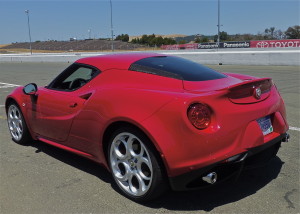
Race track setting proves designer Lorenzo Ramaciotti brought the 4C contours and emotional flair all together.
If you’re unconvinced that the 4C is emotional, and fun to drive, standing next to one is pretty good evidence of the former and starting the engine is convincing of the latter. The sound is exhilarating. It resembles the “sports-plus” settings for straight-through exhausts on Porsches or the new Corvette. The sound is part of the overall image, but it’s best experienced somewhere like the road-racing circuit at Sonoma, California, which used to be known as Sears Point.
Shift the twin-clutch direct-sequential gearbox into first and pull out of the pit lane. The steering feels just a bit heavy at first, but that’s because Alfa chose not to waste any energy on power steering. Once rolling, the light-front 4C steering is perfect, as is its precision. Build a little speed, as you exit the pits, and ease slightly up the slope toward Turn 1. Hammer it, and the sound gets better, and its reflexes seem to improve as well. The fantastic responses of the car react to every tiny steering, curving, braking or accelerating input you choose, and they conspire to create a sensory deadlock: It is impossible to calculate which is the best characteristic of just how emotional and exciting the Alfa 4C is. Read more
Same Name Covers All-New Chrysler 200
Filed under: Equinox, Autos
By John Gilbert
If you ran a pro football team and wanted to compete in the National Football League, you’d be well-advised to have a quarterback. Or if you were sending a Major League baseball team onto the field to start the season, you will need a solid starting pitcher.
Chrysler understands the analogies, by living the automotive equivalent — trying to compete in the auto business without a midsize car. Since one out of six new vehicles are selected from that largest segment in the United States, Chrysler can empathize with that football team without a quarterback or baseball team without a pitcher. (It’s just coincidence that it might seem we’re specifically comparing cars to recent seasons by the Minnesota Vikings or Minnesota Twins.)
- The new 200, which will start with a base price of $21,700, has no resemblance whatsoever to the existing 200, representing such a departure that I asked why the same name was retained. They responded with a few market-speak lines about the value of “name recognition,” similar to what Dodge officials said when their all-new vehicle was born under a resuscitated Dart name, after a previous but pretty much unloved compact sedan.
There is no question how impressive the Dart’s styling and technology is, and how special the new 200 will be for Chrysler. The comparison to the Dart, incidentally, is well-founded, because the 200 shares the underpinnings with Dart of the Alfa Romeo Giulietta — a platform Chrysler officials have praised as the best and most versatile the company has ever used, and one which can be adjusted any direction for length and width.
When the style-conscious Fiat folks guided Chrysler into its midsize venture, they didn’t mess around. The 200 is larger than the compact Dart, which takes on the Honda Civic, Mazda3, Toyota Corolla, Chevrolet Cruze, Ford Focus, Volkswagen Jetta, and Nissan Versa. The 200, meanwhile, is taking on the big boys, such as the Honda Accord, Toyota Camry, Mazda6, Ford Fusion, Chevrolet Malibu, Nissan Altima and Volkswagen Passat.
In order to wade into that competition, Chrysler was required to nail everything from design to comfort, to technology, to creature features, and to performance, not necessarily in that order. If the plan was to hit one out of the park, Chrysler picked wisely in its location for the introduction: Louisville, Kentucky, home of the Louisville Slugger baseball bat company, with the actual presentation at Louisville Slugger Stadium, one of the neatest and best-designed minor-league ballparks.
Without question, the 200 is stunning to look at. As you approach it, you may not have any idea what it is, except that it is obviously wearing a fresh, contemporary version of the “four-door coupe” style, with a sleek, swept-back roofline. Read more


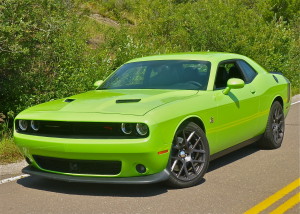
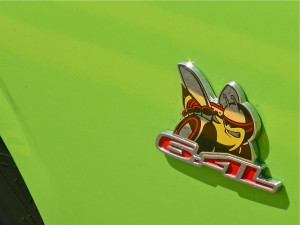
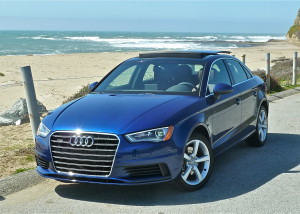
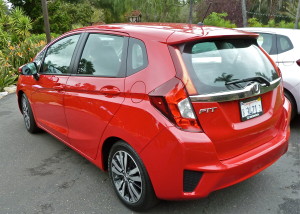
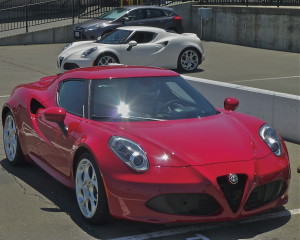
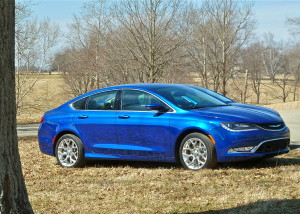
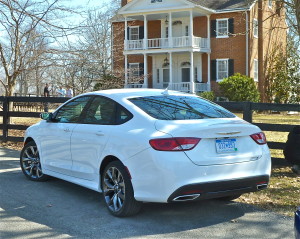
 John Gilbert is a lifetime Minnesotan and career journalist, specializing in cars and sports during and since spending 30 years at the Minneapolis Tribune, now the Star Tribune. More recently, he has continued translating the high-tech world of autos and sharing his passionate insights as a freelance writer/photographer/broadcaster. A member of the prestigious North American Car and Truck of the Year jury since 1993. John can be heard Monday-Friday from 9-11am on 610 KDAL(www.kdal610.com) on the "John Gilbert Show," and writes a column in the Duluth Reader.
John Gilbert is a lifetime Minnesotan and career journalist, specializing in cars and sports during and since spending 30 years at the Minneapolis Tribune, now the Star Tribune. More recently, he has continued translating the high-tech world of autos and sharing his passionate insights as a freelance writer/photographer/broadcaster. A member of the prestigious North American Car and Truck of the Year jury since 1993. John can be heard Monday-Friday from 9-11am on 610 KDAL(www.kdal610.com) on the "John Gilbert Show," and writes a column in the Duluth Reader.